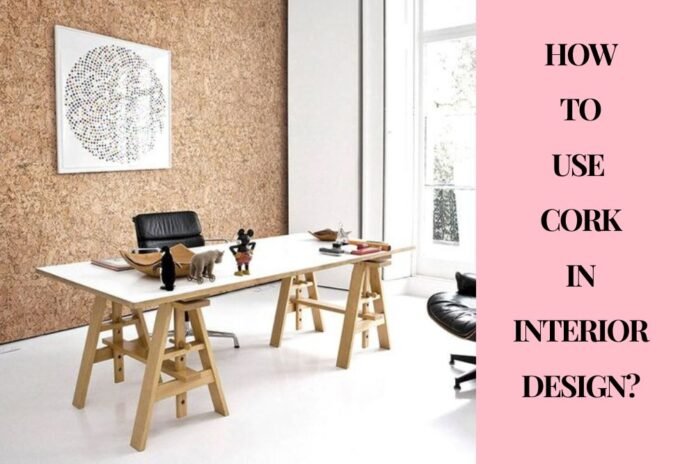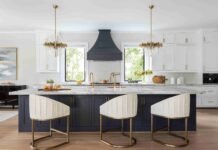Are you wondering how to include Cork in the interior design? Well, you will get your answers here. Cork is one of the most unique materials with a porous texture, tenderness and light quality. This is a great durable material for interior design projects. Cork can be easily applied in interior design when beaten in thin boards, making durable corkboards.In this article, we will detect some creative methods to include Cork in your interior design, why cork is a good material for interior design, and other durable interior design ideas.
Table Contents
The Best Ways to Use Cork in Interior Design
1. Corkboard Ceilings
If you are eager to get rid of monotonous white roof, the corkboard roof may be the best option. They can result in an elegant and modern interior. The material is also known for its thermal insulation, which implicates heat and creates a comfortable and comfortable environment. In addition, it has a sound-damping feature that dramatically absorbs unwanted sound and creates a soothing atmosphere.
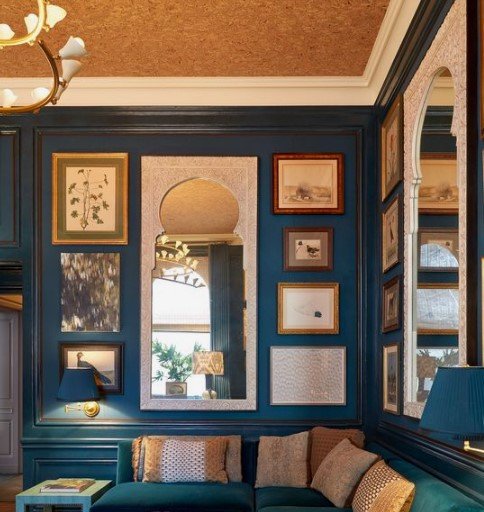
2. Coverings For Walls
In general, the textured material and the warm colors of the corkboard create a more interactive and welcome location. Generally, bright colors are used to bring refreshments to one place. Since cork is an organic material from the bark of oak trees, it has a natural appearance and is easy to harmonize with vegetation in the form of a foreground.

3. Corkboard Flooring
The soft surface of the cork frame acts as a pillow and prevents children and adults from being injured. It is an ideal floor material because it is durable, easy to install and easy to maintain. This cork floor is also suitable for all traditional and modern houses, especially for people with Kerala Home interior design, who will make it the best ecological home.
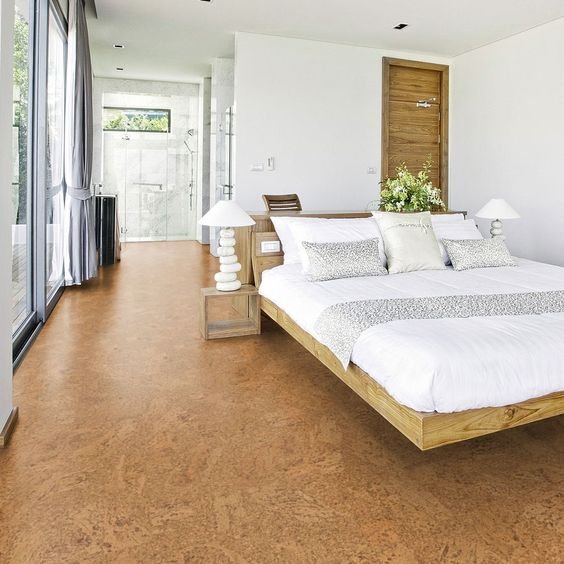
4. Kitchen Countertop
If you have a simple Indian kitchen interior, it is ideal to use corkboards because of their fire-resistant and durable properties. It is a substance that can withstand cracks and abrasions and is also very easy to repair. The beige stool harmonizes with the natural warm color of the cork material. This highlights the kitchen’s classical look.
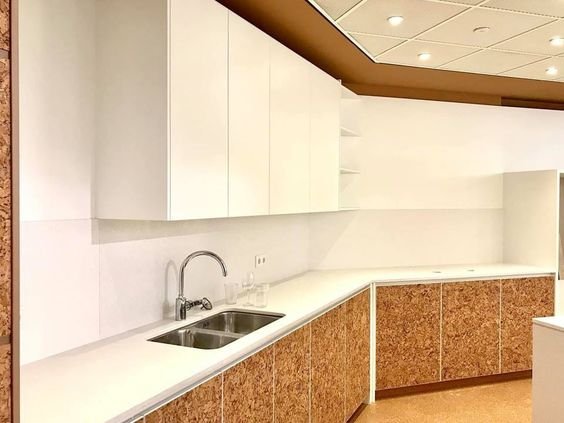
5. Corkboard Furniture
Corkboard is a very economical, non-toxic and durable material for furniture designers. This renewable, flexible materials are used to make furniture such as stools, sofas, chairs, benches and tabletops. By incorporating cork in the interior design, an attractive atmosphere is created by natural texture and warm colors of the surface.
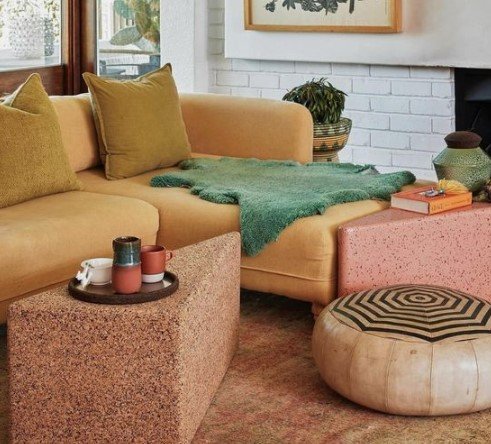
Reasons To Consider Cork In Interior Design
1. Sustainability
With increasing demand and recognition of permanent options, Cork has emerged as an ideal option for environmentally friendly furniture and fittings. The cork provides a low carbon solution from the outer bark of the oak tree, which grows in southwest Europe and northwest Africa, without the need to cut the cork trees. Instead, the bark is carefully removed and a period of nine years is given to reproduce. It helps in creating the best European interior design for modern homes. This process does not harm the correct maintenance cork trees, allowing them to be absorbed up to five times CO2 than unabated people.
2. Lightness
There is about half the air of cork volume, which makes it very light material, which weighs just 0.16 grams per cubic centimeter, and it floats. Therefore, you can choose light and movable products such as Pipo Stool or Flora Table from the dam. Cork materials or cork products are also easy to ship as cork is mild and compact, which reduces its carbon footprint than wood or stone.
3. Thermal and acoustic Insulation
The gaseous components in cork are enclosed in small impermeable compartments and are isolated from one another, resulting in the cork’s low heat, sound, and vibration conductivity. In addition to offering all the benefits of cork, Gencork from Portugal also introduces a new dimension of unique geometric patterns to every room with wall cork paneling.
4. Durability
If you are planning for durable contemporary restaurant interior design, the interiors should be durable and face high levels of traffic and wear. Cork is an ideal choice for flooring, kitchen worktops and restaurant counters as it is extremely flexible and absorbs pressure. Additionally, it is water-resistant and has the underlying mold properties, which makes it useful in areas where food is prepared and served.
5. Versatility
As a lightweight yet strong material, cork has been used to make furniture and fittings. As well as flooring and wall tiles, it has also been used in lighting, handbags, and shoes.
Sustainable Interior Design Ideas
With homes to go into environmentally friendly options, you have to find the right durable and environmentally friendly interior design ideas for your family. In addition to the cork, many other elements create an ideal durable interior design. It is said, here are some beautiful durable interior design ideas that not only add beauty to your home, but also contribute to the more environmentally friendly future. These durable and environmentally friendly interior design can help you reduce your carbon footprints by making your home beautiful.
1. Rattan
The aesthetics and ecological qualities of Ratan furniture have made it popular in recent years. The modern interiors were originally designed for the match, they are versatile and easy to maintain. To tie your appearance and bring heat to your durable interiors design, choose some soil colors to the wall. There are other ideas here that you can try with Ratan.
2. Jute
A durable and versatile natural fiber, jute adds a rustic look for any environmentally friendly interior design and can be used in many ways to enhance aesthetics without damaging the environment. If you include it in your interior design, jute can add texture to your living spaces. Try these ideas with the best permanent interior design jute for your home.
3. Wooden False Ceilings
In addition to being an environmentally friendly interior design, you can add a traditional touch to your modern house with a false roof of wood. A wooden false ceiling is also an excellent heat insulator and helps your room to keep cooler for longer. It adds a warm and comfortable element to your place and gives a rustic look.
4. Plants
In order to achieve an eco-friendly sustainable interior design, plants should be used as decor. In addition to serving as a great alternative to most decor items, plants can also fit in with every interior design style. For homes that do not receive much natural light, succulents are a good choice.
5. Terracotta
Making a comeback, terracotta is one of the best sustainable interior materials. Made of clay that is baked in a kiln, terracotta is both durable and moisture-resistant.
Conclusion
The inclusion of permanent ingredients such as Cork, Rattan, Jute, Wood and Teracta in internal design not only improves the beauty appeal of your home, but also supports environmentally friendly practices. CORK stands out as a versatile and conscious option of the environment, with its unique properties of lightness, durability and excellent isolation. From roofs from cork to floor and furniture, its applications provide innovative ways to integrate stability in various aspects of home design.
Also read: Kerala home interior design

